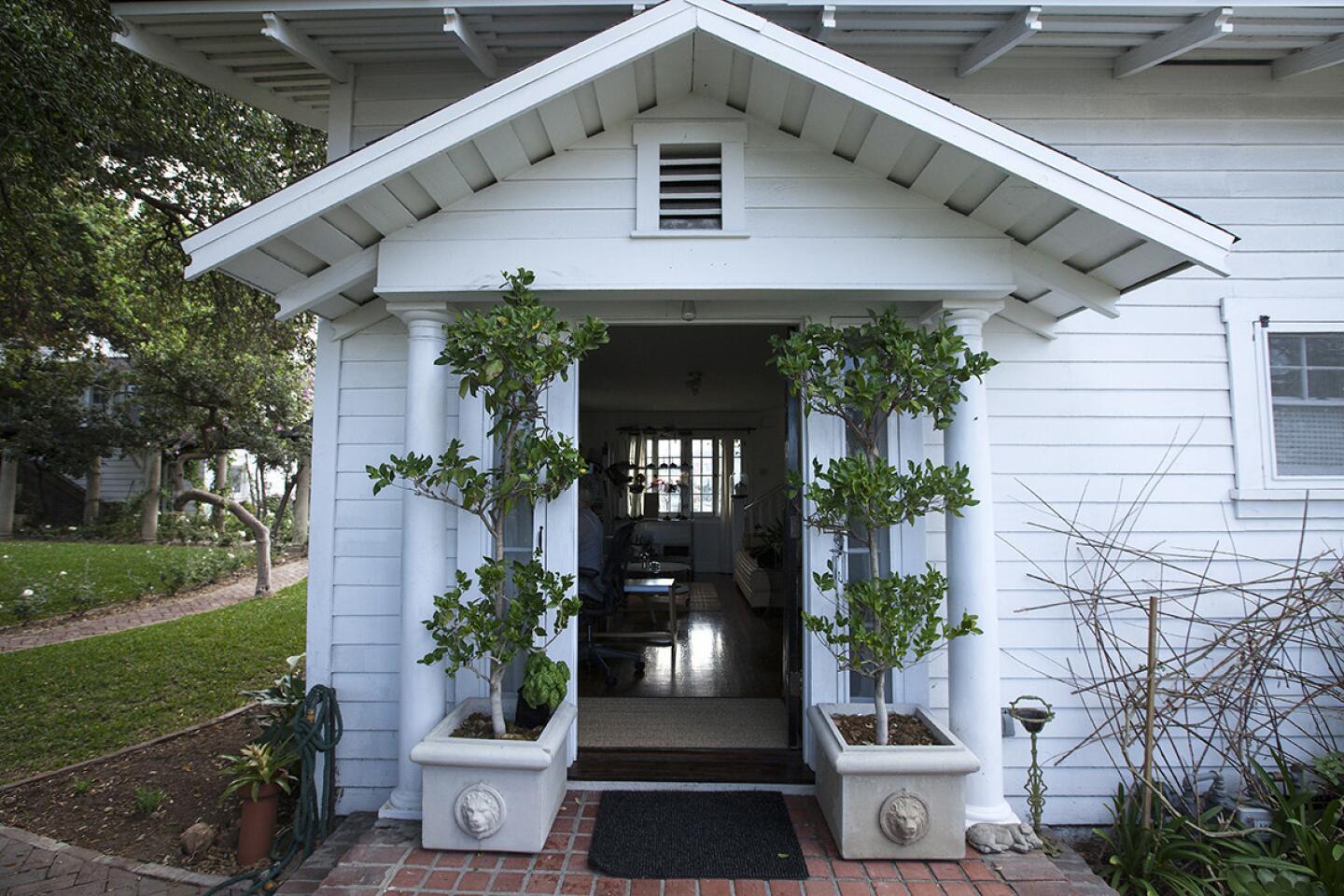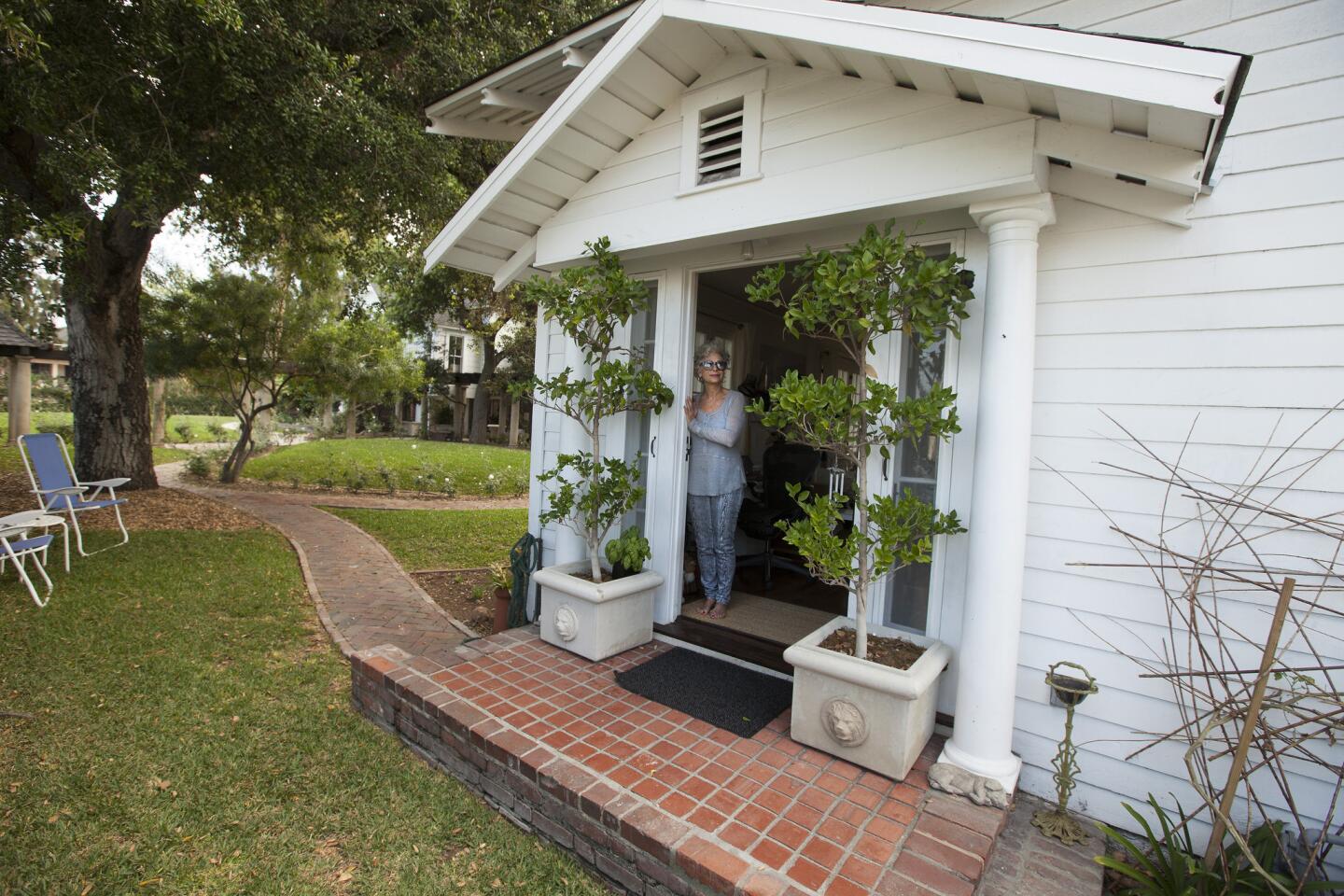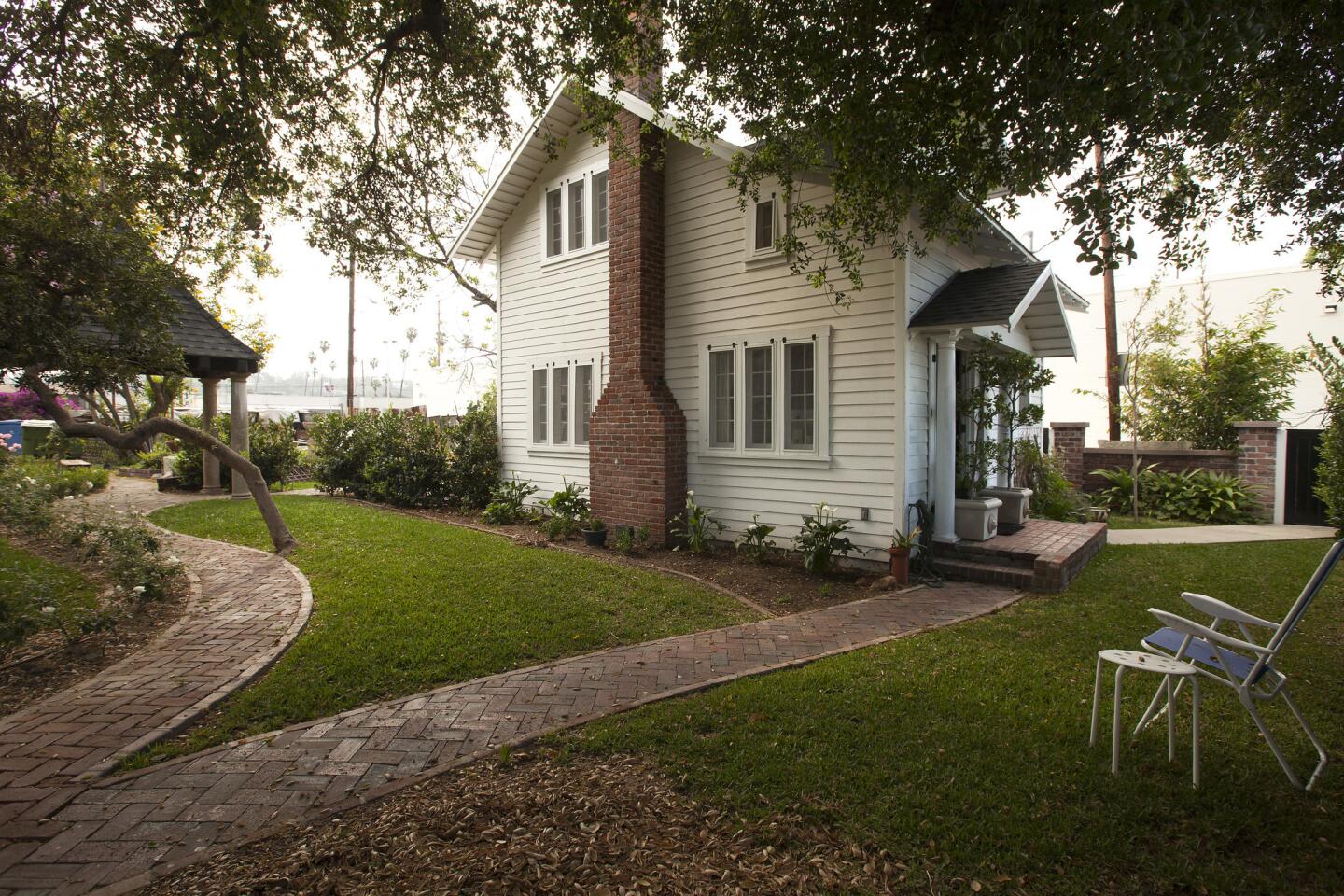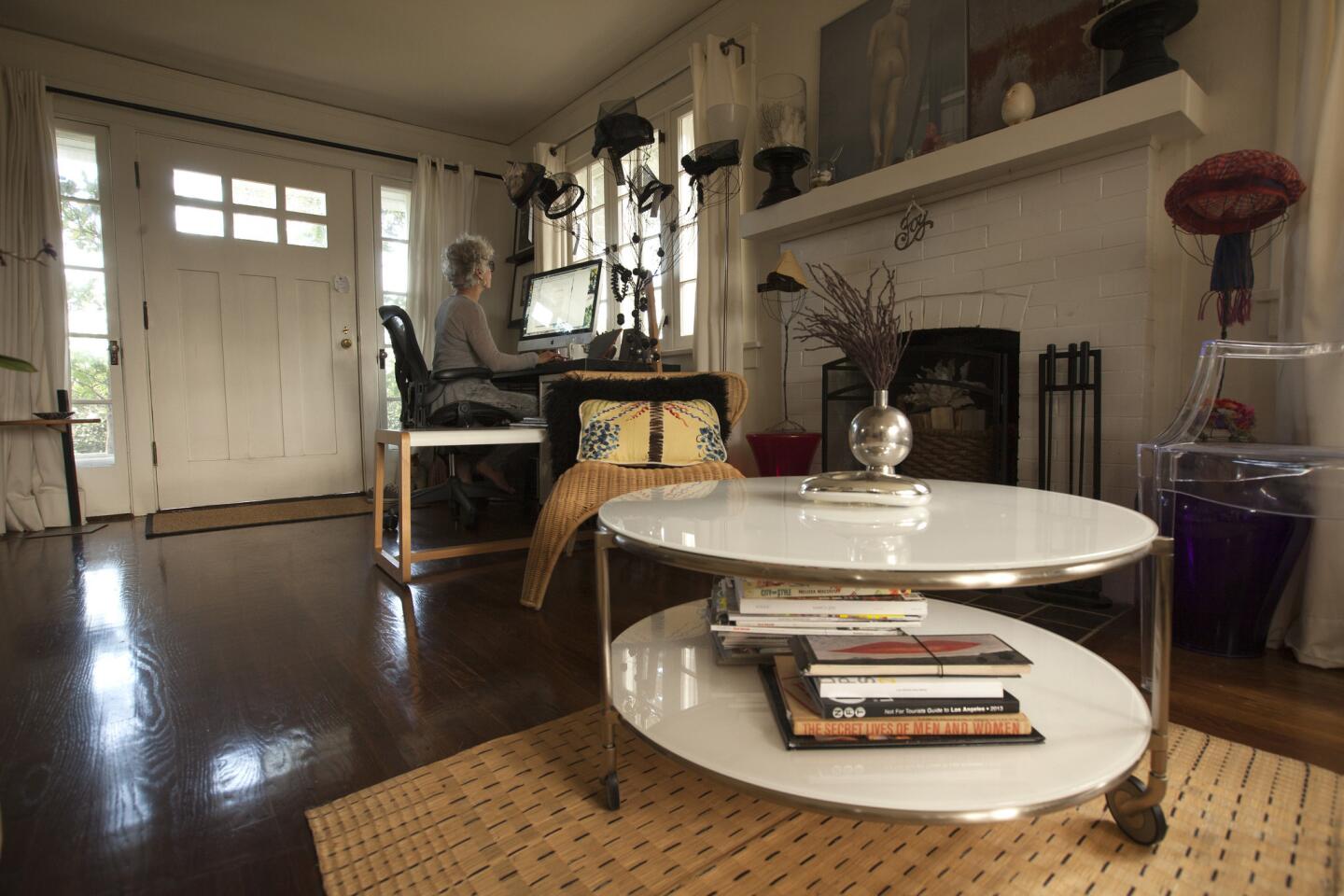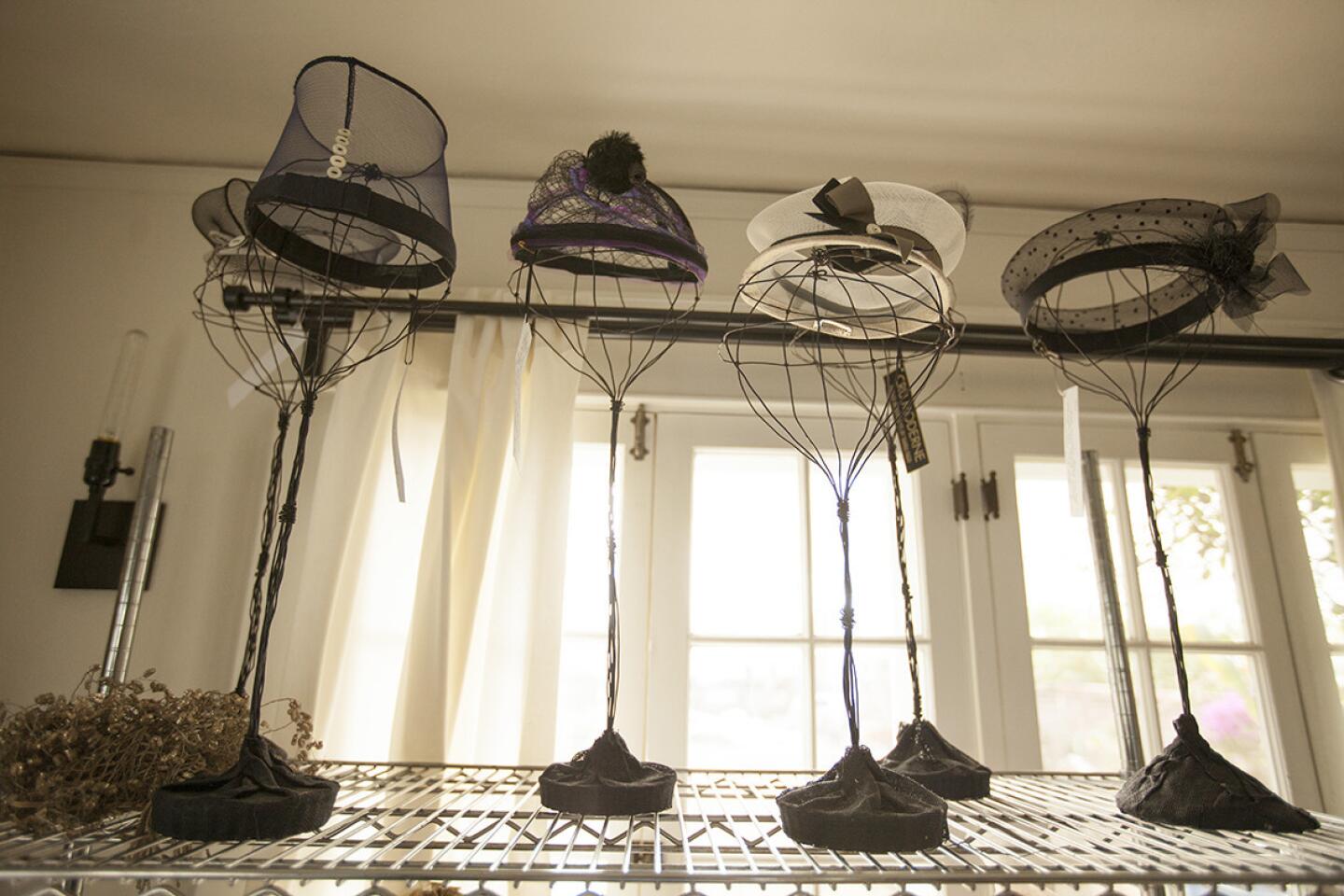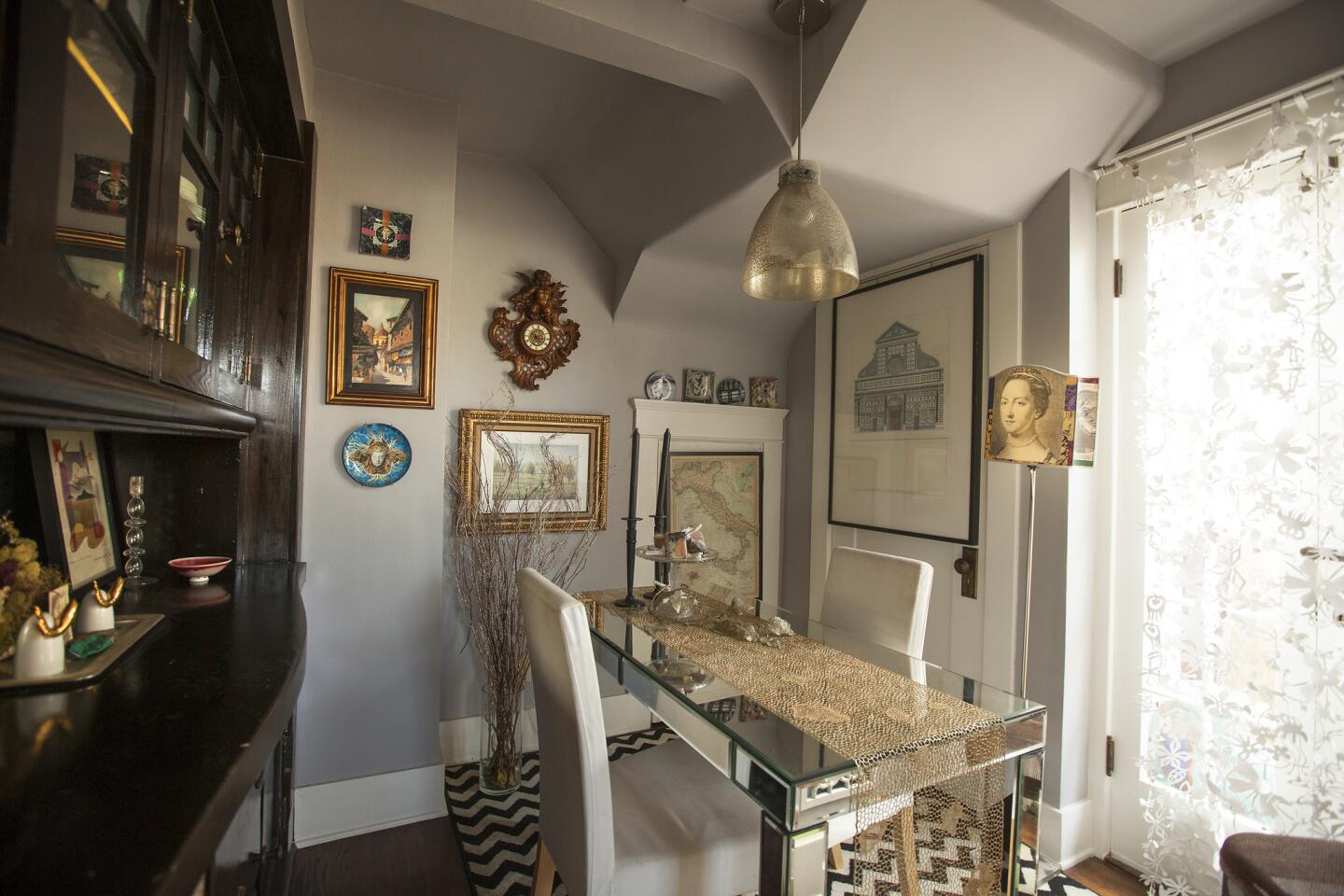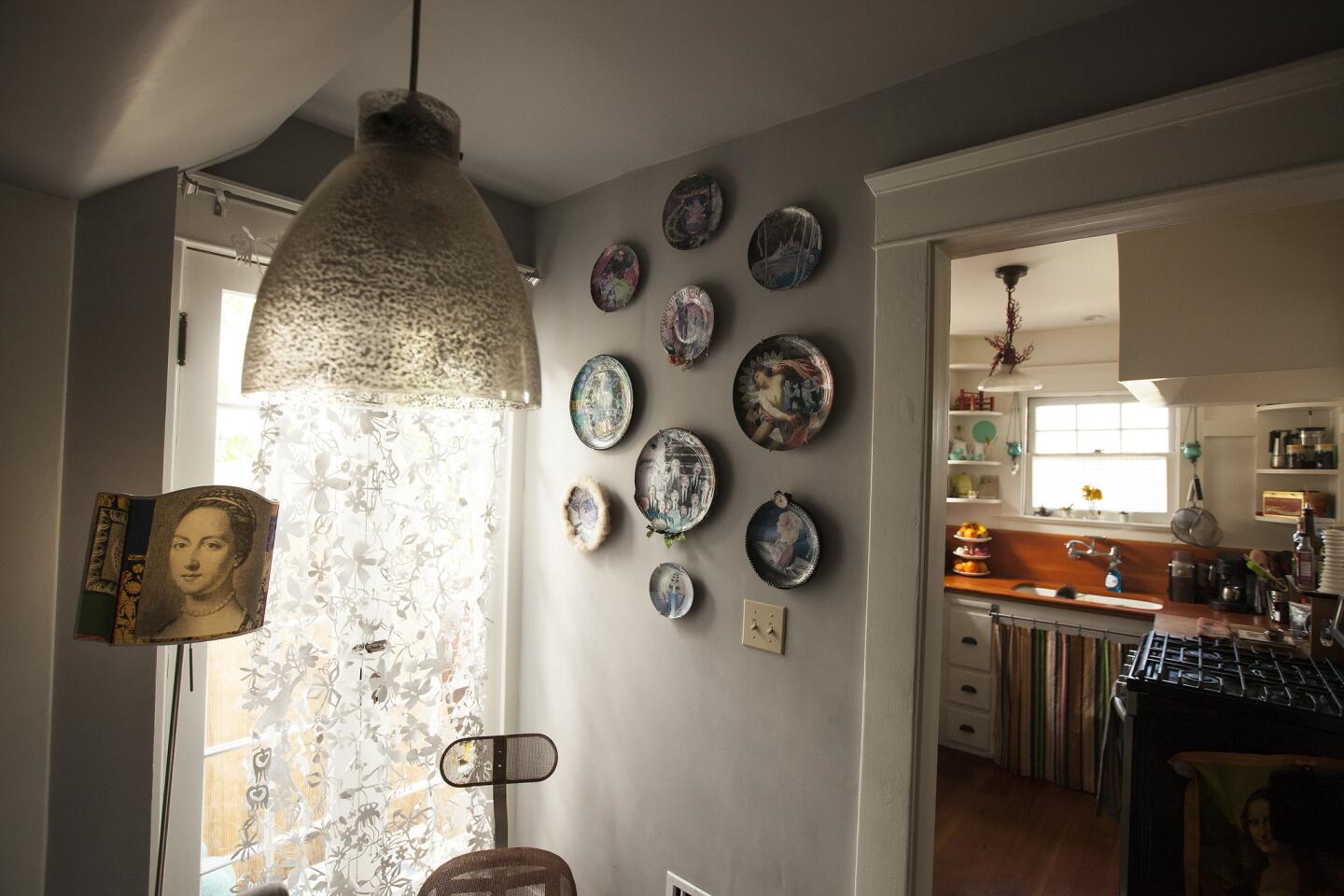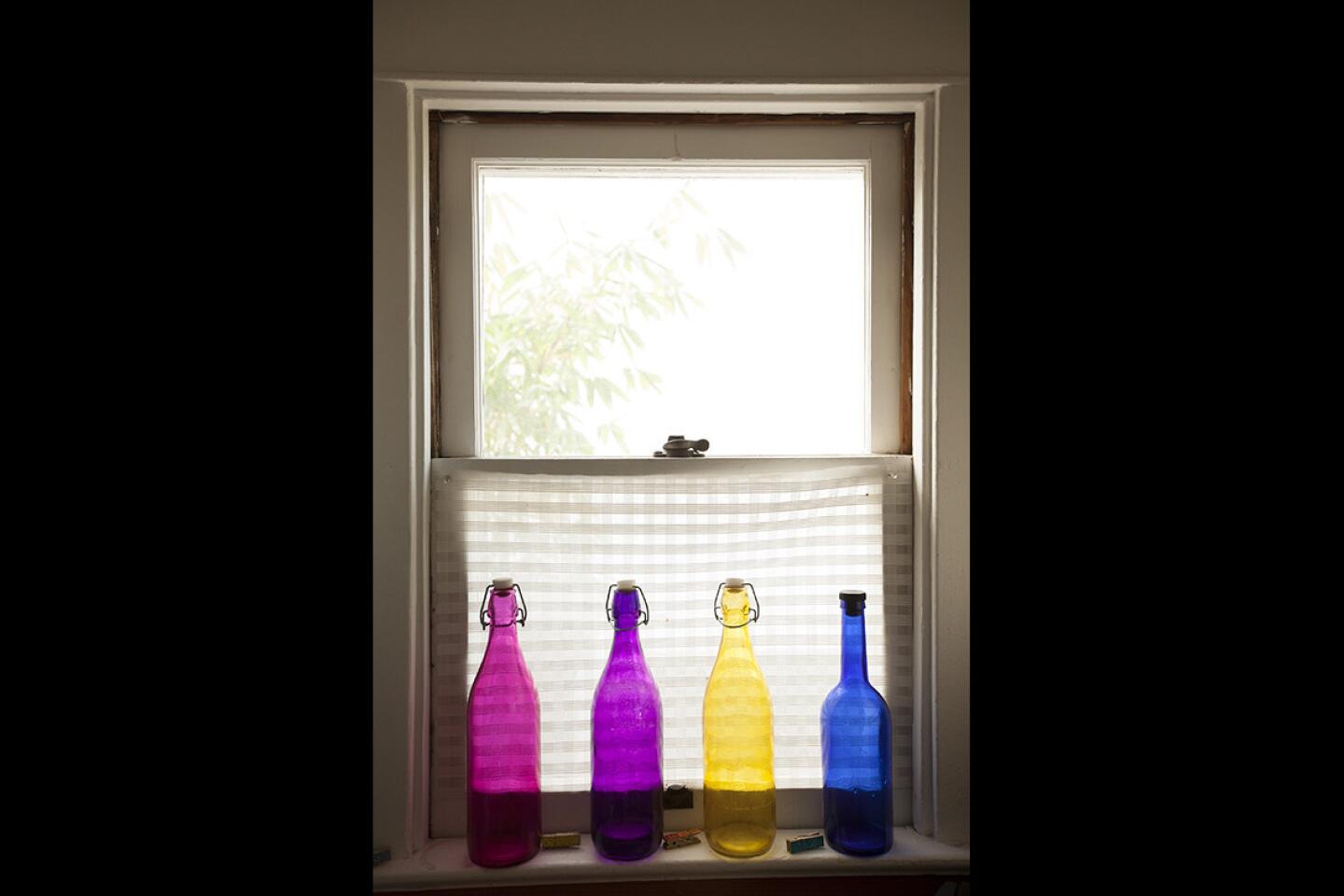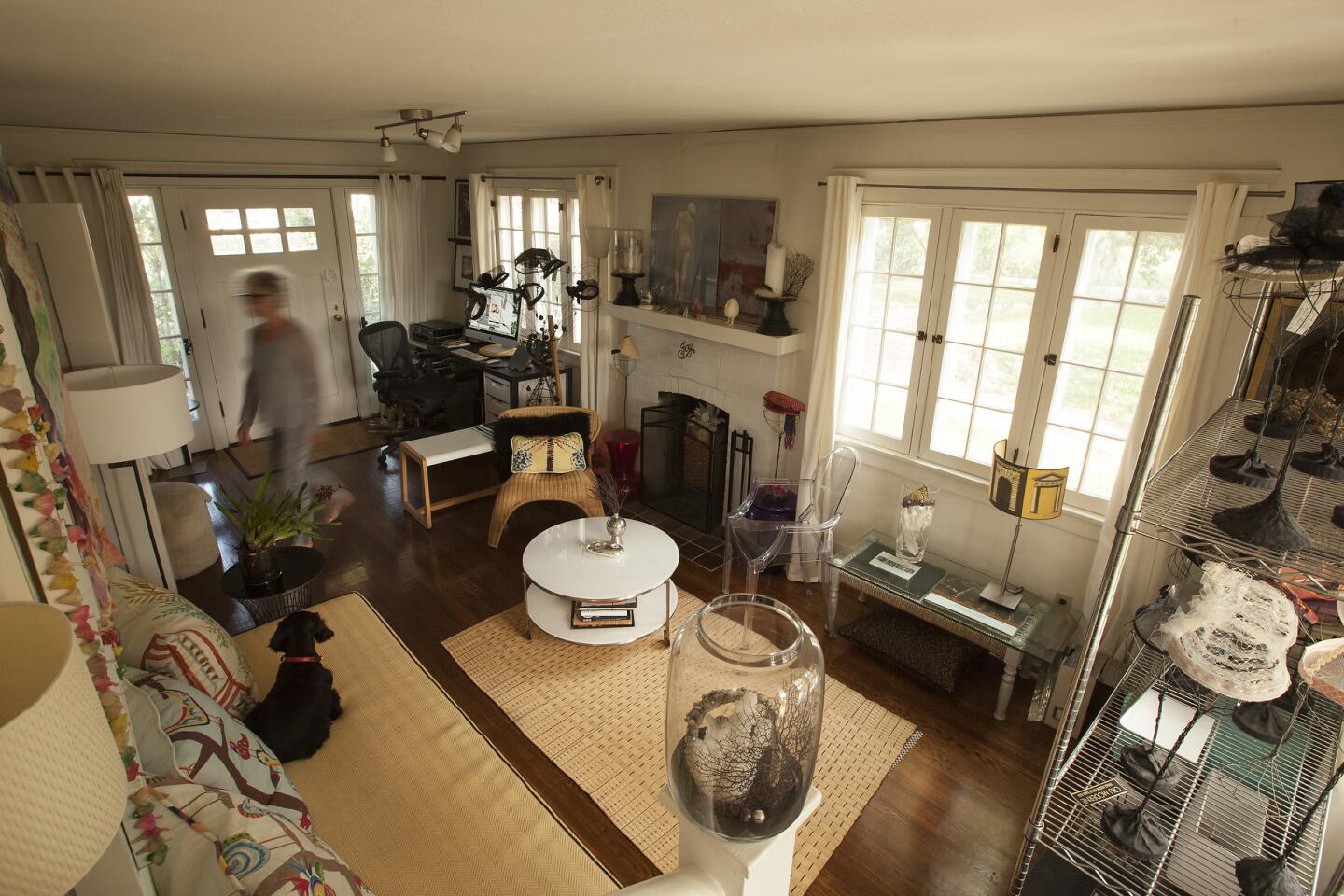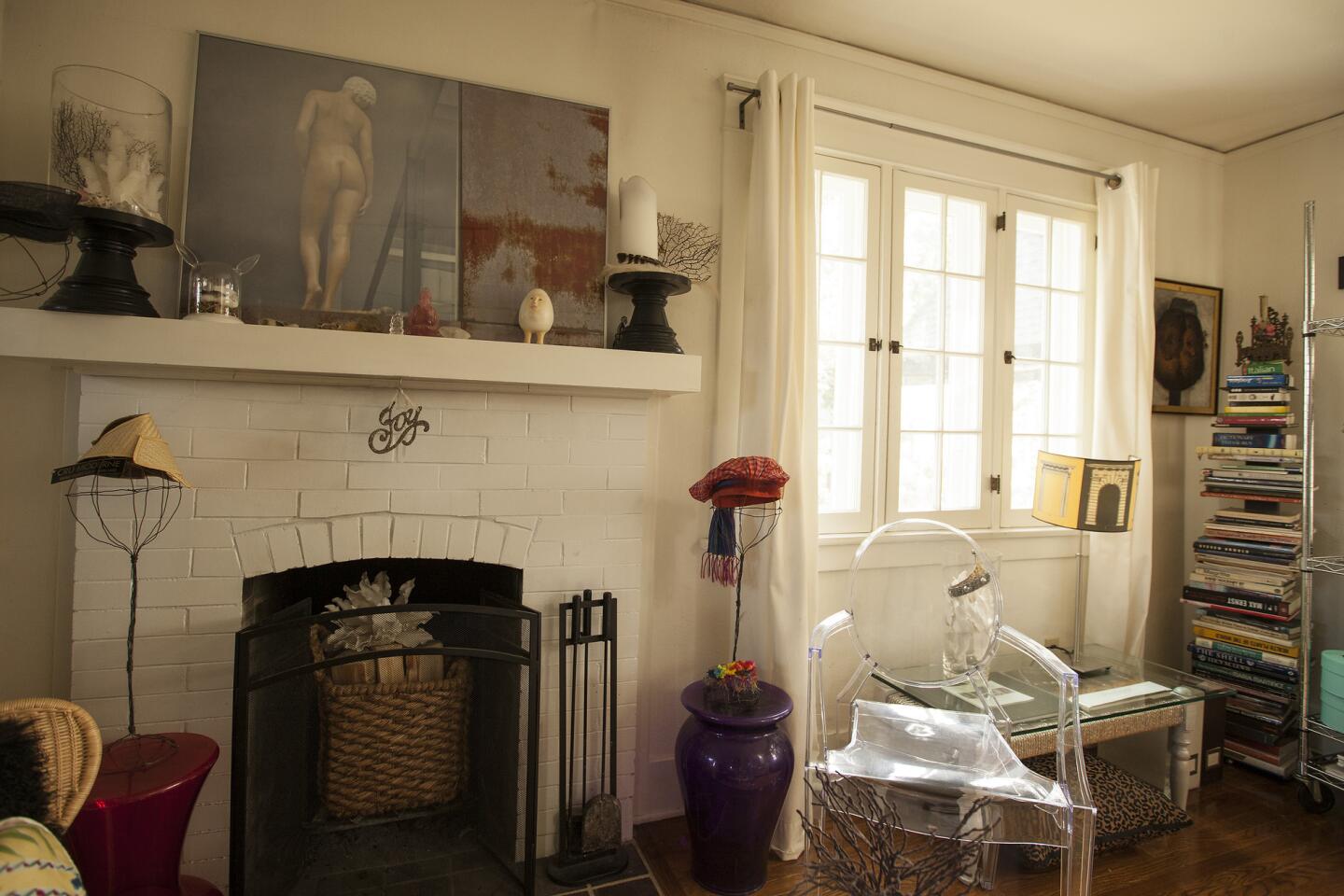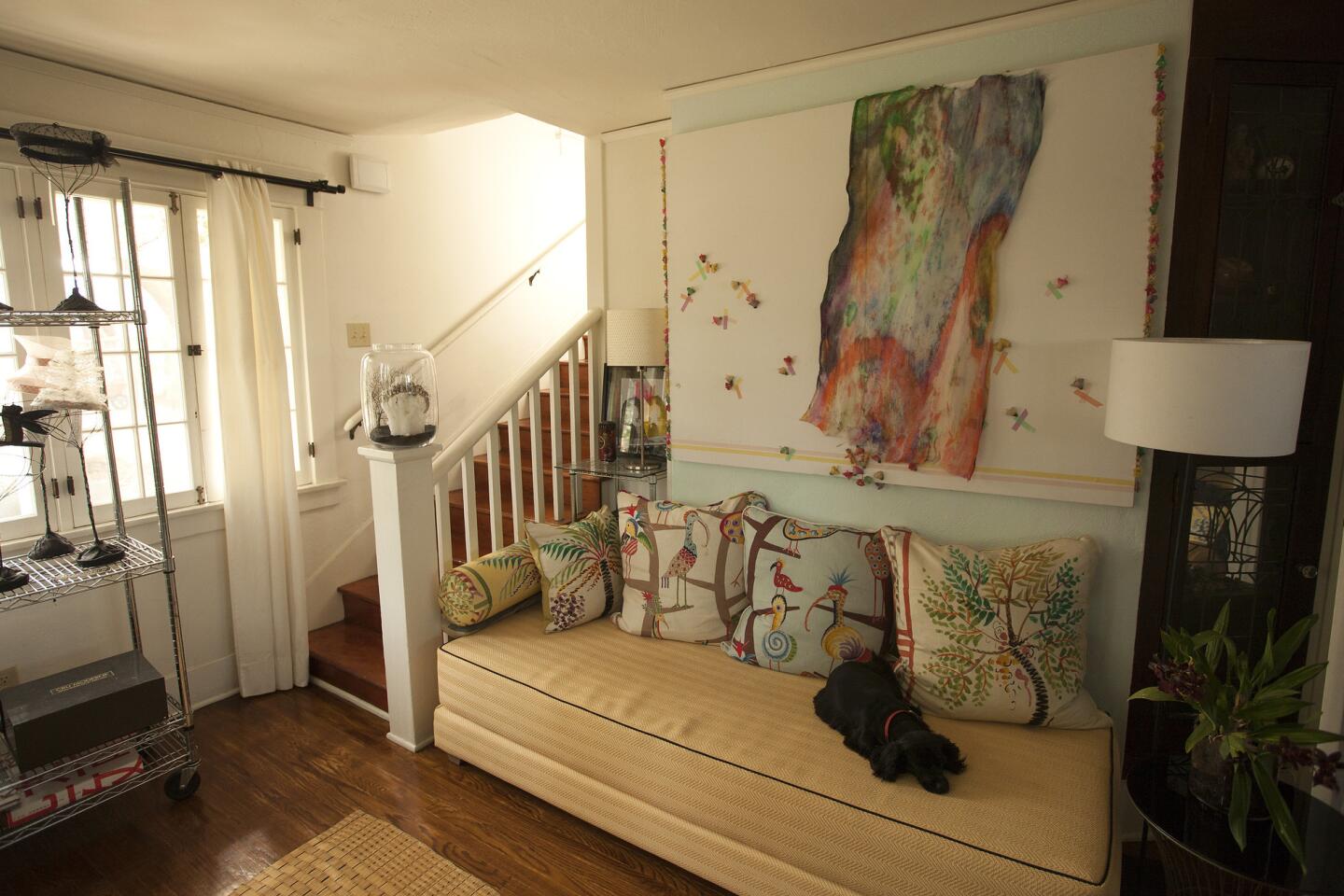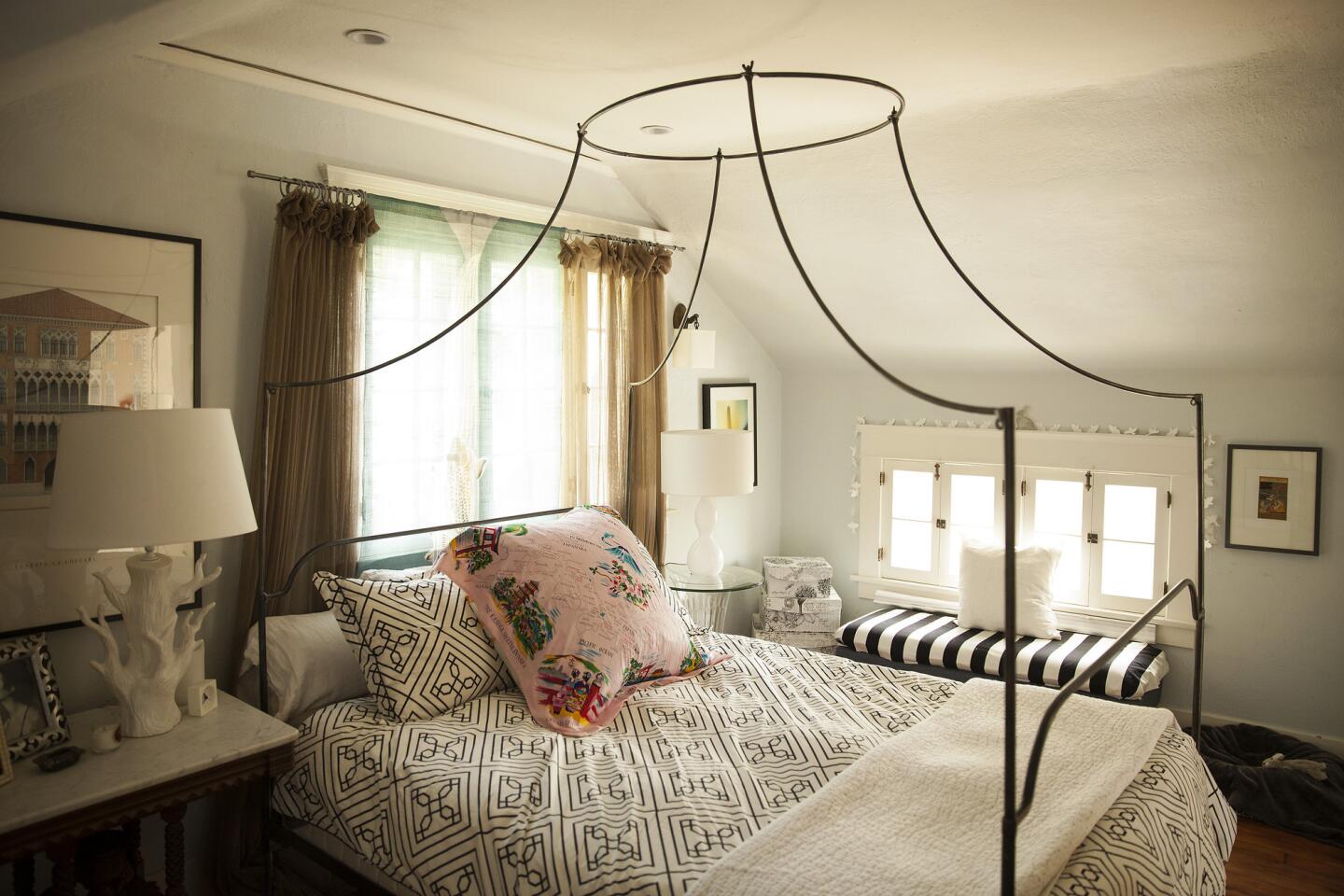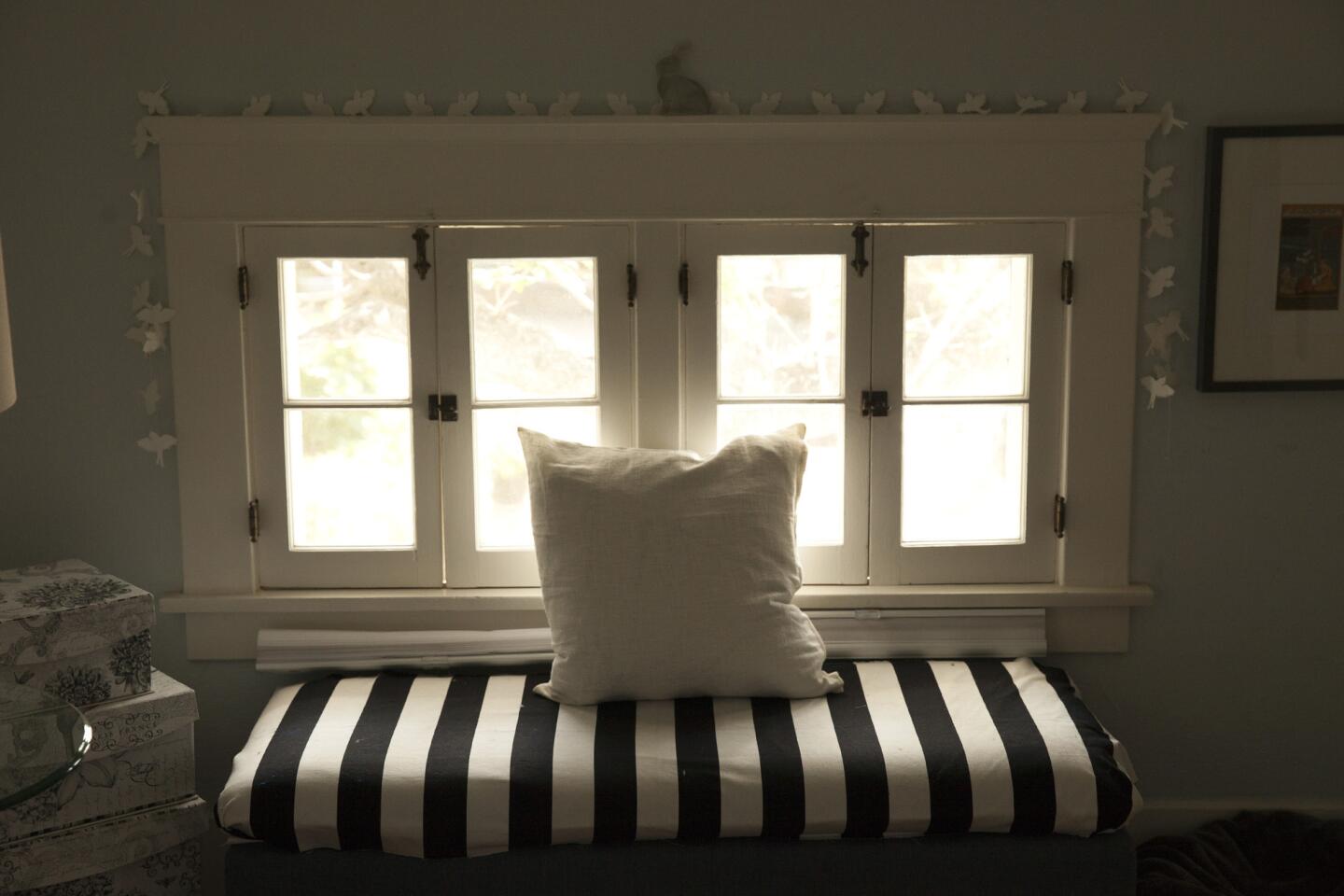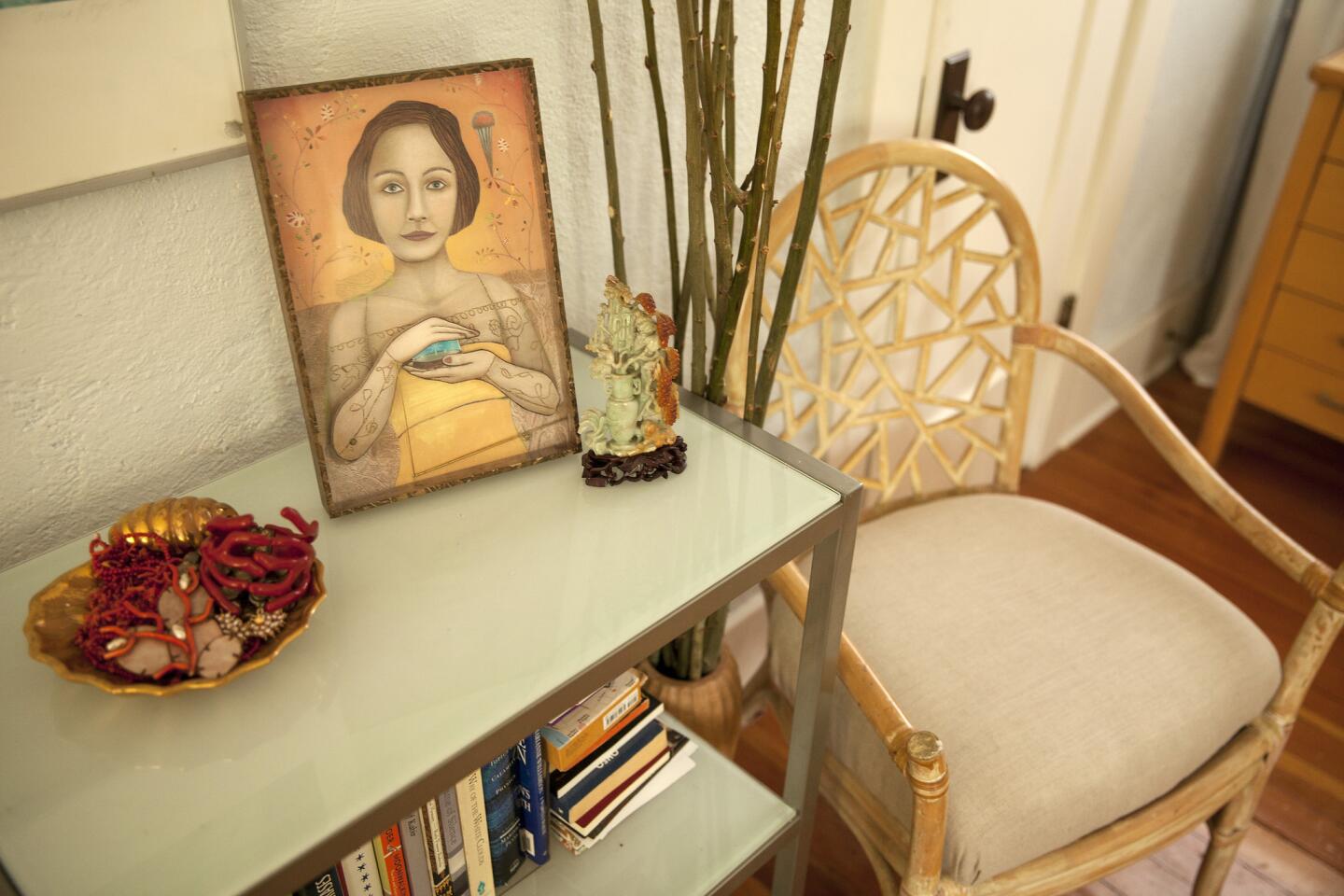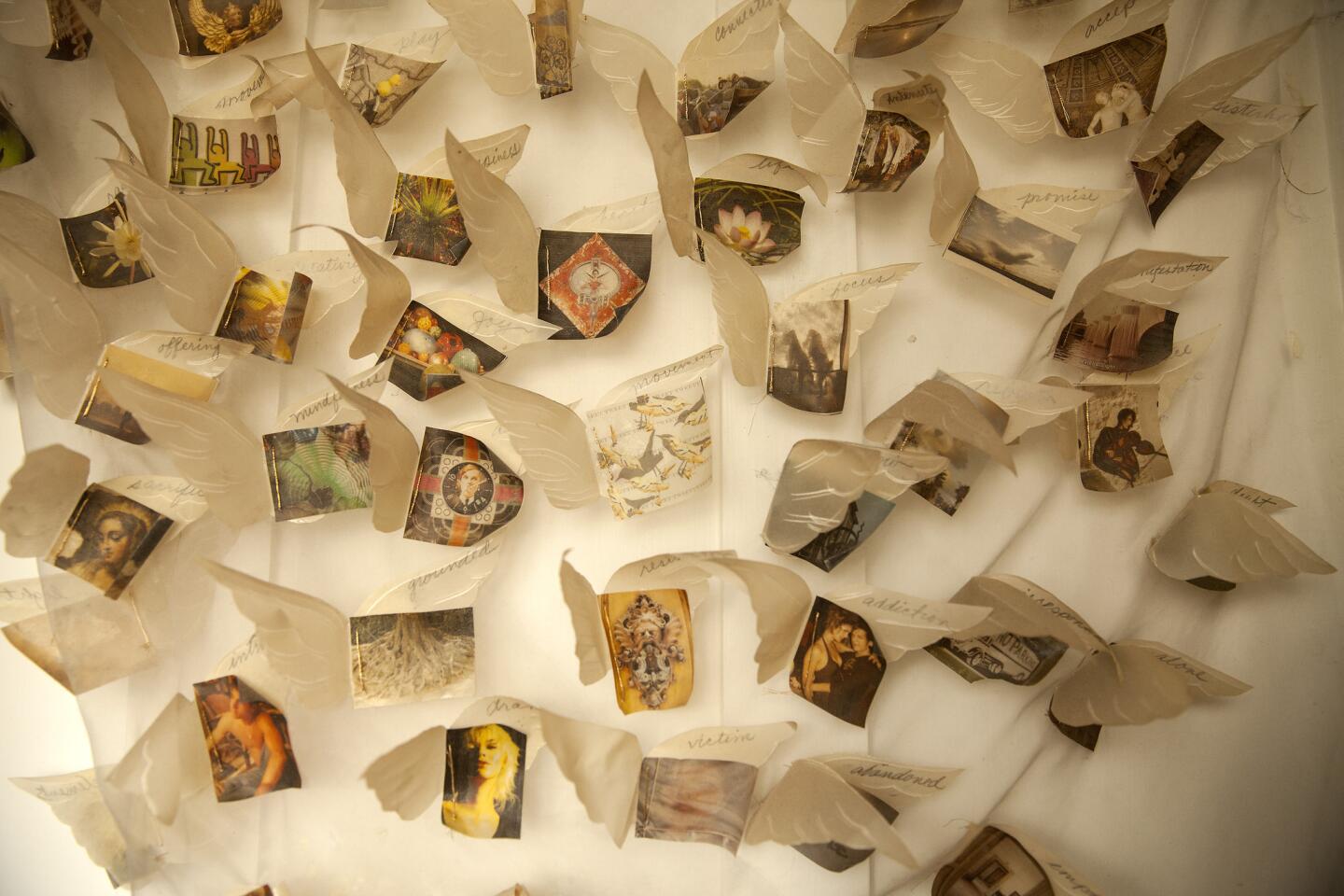L.A. artist bends time and space in restored 1905 home
- Share via
Living large in a small space is not only possible, it can also be beautiful — if Tamra Fago’s 900-square-foot home in the Garvanza neighborhood near downtown L.A. is any indication. Though cozy, the artist’s space is filled with all sorts of pieces that combine to create a charming whole.
Fago, a former graphic designer and photo stylist with more than 30 years of experience designing clothing and accessories, gravitated to her current lodgings after a stint in Silver Lake. “It was just getting too expensive,” she says. Now her early 1900s, white board and batten two-story home offers beauty, community and cost-efficiency.
Garvanza, which is bordered by South Pasadena, Highland Park and Pasadena, is one of L.A.’s oldest neighborhoods. The home she rents, built in 1905 and one of three self-contained living spaces on the 18,000-square-foot property, was restored over 20 months by preservationist and owner Brad Chambers (see accompanying article).
Apart from sharing the now-lush compound with two other renters, who each live in their separate structures, Fago’s location puts her just down the street from her 28-year-old daughter.
Inside her house, the whites, creams and blue-grays of the walls and chocolate of the hardwood floors are offset by Fago’s vintage modern aesthetic. “I’m a minimalist when it comes to basic forms, but then my artistry takes over,” she says, adding: “My head is always in the clouds.”
Upon entering the home, sculptural hats — Fago’s latest creative venture is called Cru Moderne — are mounted on steel wire trees. Her high-end chapeaus ($200 to $650) are carried at Camille DePedrini in South Pasadena and at CruModerne.com.
Her hats are surrounded by a lifetime of artworks and baubles.
In one corner, a lacquered Chinese wardrobe found at a garage sale is juxtaposed with a rattan chair that Fago re-covered in a dark felt adorned with colorful squiggles and an Anthropologie pouf she re-covered in cream sheepskin.
In the galley-style kitchen, Fago makes the most of her space by supplementing the vintage shelving with a butcher-block-topped kitchen trolley. Antique tin cans and colorful ceramics sit on the counter and do double-duty as containers.
“The world’s smallest dining room,” Fago jokes, is a study in sophistication writ small. A West Elm Parsons desk is sandwiched by two white and birch-legged seats atop a bold, zigzag-patterned rug. On the table, Chilewich’s brass-colored vinyl runner in a coral pattern brightens a collection of seashells, dried coral and golden-winged salt and pepper shakers. “I grew up on the beaches of San Diego,” says Fago. “I’ve always loved seashells.”
A contemporary West Elm mirrored pendant lamp and a floor lamp with a Fornasetti-esque print shade that Fago found in Florence, Italy, light the room at night.
Behind the dining area is an antique breakfront (Fago lined the drawers with leopard-print silk) salvaged from another Chambers property: the late-1800s Donnelly House once owned by 19th century L.A. Mayor Prudent Beaudry. Small framed art and plates pepper the walls. A metal cutout in a floral pattern, made by Studio Tord Boontje for Artecnica and hanging on a curtain rod, creates a serene, dappled effect in the room.
On the second floor, a similar story unfolds. A piece of art here, a organism-inspired accessory there. Though constrained in space, Fago’s home is an ever-changing canvas. For the spring, Fago has brought in a raffia couch and a tatami mat. “I’m always changing things around. Thousands of ideas go through my head all the time.”
Though filled to the brim with memories and a lifetime of creative work. Fago’s home doesn’t overwhelm. Instead, it is a testament to a life of ingenuity.
::
Banker invests his passion in reviving small historic homes in L.A.
Bank executive Brad Chambers didn’t set out to be a preservationist, but his financial background, coupled with a love for small architectural structures, naturally led him down that path.
Over almost two decades, Chambers has purchased, restored and rented out nine historic homes within the Garvanza neighborhood — each around1,500 square feet or less — and others outside of the neighborhood.
“Those houses are the ones that are most at risk,” Chambers says. “It’s very easy to justify tearing them down because [they’re] too small for families and too expensive for investors, who could make more money building multi-family homes on the same land.”
The restoration of the Garvanza structures, including the home currently rented by Tamra Fago, is Chambers’ most ambitious project to date. (The first house built on the property, owned by Dr. John Lawrence Smith, one of the first doctors in the neighborhood and an activist for street improvements, was built in 1886.)
The property was in poor condition when Chambers purchased it in 2012 for about $350,000. The first task was landscaping, “so people can look at nice gardens instead of trash,” Chambers says.
After that, Chambers and his crew worked on restoring the buildings on the property — Fago’s free-standing home, the 1,800-square-foot main residence and a 720-square-foot adjoining structure. In each, Chambers redid the plumbing, electrical systems, and heating and air, as well as rejuvenated the Victorian detailing, using available public records and dipping into his extensive architectural salvage collection. He also re-oriented the main residence to its original direction, facing Avenue 63. “It’s a bit like putting together a puzzle,” says Chambers. And he’s not done yet.
Chambers is seeking city approval to build a replica of a barn from the Perry-Davis/Gandahl mansion in Boyle Heights, complete with an octagonal tower and battlements. The structure would sit at the back of the Garvanza property, accommodating additional tenants on the second floor and adding three covered garage spaces.
